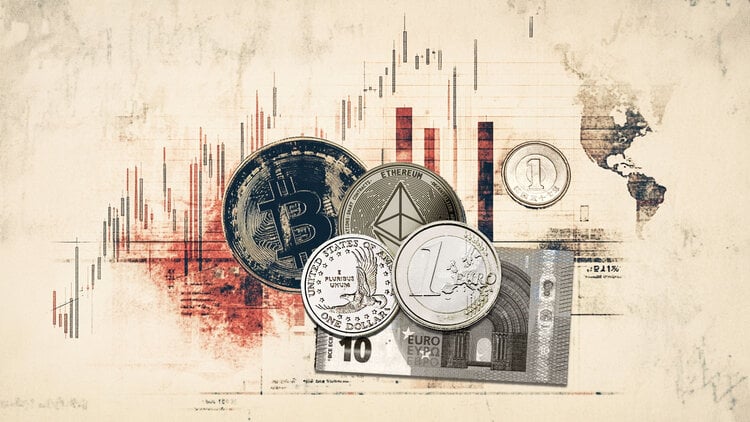Here is what you need to know on Thursday, May 22:The trading action in financial markets remain relatively quiet early Thursday
Here is what you need to know on Thursday, May 22:
The trading action in financial markets remain relatively quiet early Thursday as investors gear up for preliminary Purchasing Managers Index (PMI) data from Germany, the Eurozone, the UK and the US. The US economic calendar will also feature weekly Initial Jobless Claims and April Existing Home Sales data, and officials from major central banks will be delivering speeches later in the day.
US Dollar PRICE This week
The table below shows the percentage change of US Dollar (USD) against listed major currencies this week. US Dollar was the weakest against the Japanese Yen.
| USD | EUR | GBP | JPY | CAD | AUD | NZD | CHF | |
|---|---|---|---|---|---|---|---|---|
| USD | -1.17% | -1.02% | -1.38% | -0.79% | -0.58% | -0.72% | -1.33% | |
| EUR | 1.17% | 0.13% | -0.16% | 0.45% | 0.72% | 0.52% | -0.16% | |
| GBP | 1.02% | -0.13% | -0.60% | 0.32% | 0.59% | 0.39% | -0.29% | |
| JPY | 1.38% | 0.16% | 0.60% | 0.61% | 0.97% | 0.88% | 0.10% | |
| CAD | 0.79% | -0.45% | -0.32% | -0.61% | 0.23% | 0.07% | -0.61% | |
| AUD | 0.58% | -0.72% | -0.59% | -0.97% | -0.23% | -0.20% | -0.86% | |
| NZD | 0.72% | -0.52% | -0.39% | -0.88% | -0.07% | 0.20% | -0.68% | |
| CHF | 1.33% | 0.16% | 0.29% | -0.10% | 0.61% | 0.86% | 0.68% |
The heat map shows percentage changes of major currencies against each other. The base currency is picked from the left column, while the quote currency is picked from the top row. For example, if you pick the US Dollar from the left column and move along the horizontal line to the Japanese Yen, the percentage change displayed in the box will represent USD (base)/JPY (quote).
During the Asian trading hours on Thursday, the House Rules Committee approved US President Donald Trump’s sweeping tax-cut bill. A full house floor vote on the bill is expected following a debate later in the day. Meanwhile, US Treasury bond yields shot higher late Wednesday after the weak demand seen in the 20-year note auction. The benchmark 10-year US yield rose more than 2.5% on Wednesday and reached its highest level since February above 4.6%. After closing in the negative territory for three consecutive days, the US Dollar Index fluctuates in a tight channel above 99.50.
EUR/USD stays in a consolidation phase above 1.1300 in the European morning on Thursday. Later in the session, the European Central Bank will release Monetary Policy Meeting Accounts.
GBP/USD climbed to its highest level in more than three years at 1.3470 on Wednesday but erased a portion of its daily gains in the American trading hours. The pair fluctuates in a narrow band slightly above 1.3400 to start the European session.
Atsushi Mimura, Japan’s Vice Finance Minister for International Affairs and top foreign exchange official, said early Thursday that they did not discuss foreign exchange levels at the finance ministers’ meeting. USD/JPY remains in a downtrend and trades in negative territory below 143.50.
Gold gathered bullish momentum and rose above $3,300 on Wednesday. XAU/USD holds its ground and trades near $3,330 in the European morning. The Wall Street Journal reported that President Trump told European leaders earlier in the week that that Russian President Vladimir Putin isn’t ready to end the war because he thinks he is winning.
Risk sentiment FAQs
In the world of financial jargon the two widely used terms “risk-on” and “risk off” refer to the level of risk that investors are willing to stomach during the period referenced. In a “risk-on” market, investors are optimistic about the future and more willing to buy risky assets. In a “risk-off” market investors start to ‘play it safe’ because they are worried about the future, and therefore buy less risky assets that are more certain of bringing a return, even if it is relatively modest.
Typically, during periods of “risk-on”, stock markets will rise, most commodities – except Gold – will also gain in value, since they benefit from a positive growth outlook. The currencies of nations that are heavy commodity exporters strengthen because of increased demand, and Cryptocurrencies rise. In a “risk-off” market, Bonds go up – especially major government Bonds – Gold shines, and safe-haven currencies such as the Japanese Yen, Swiss Franc and US Dollar all benefit.
The Australian Dollar (AUD), the Canadian Dollar (CAD), the New Zealand Dollar (NZD) and minor FX like the Ruble (RUB) and the South African Rand (ZAR), all tend to rise in markets that are “risk-on”. This is because the economies of these currencies are heavily reliant on commodity exports for growth, and commodities tend to rise in price during risk-on periods. This is because investors foresee greater demand for raw materials in the future due to heightened economic activity.
The major currencies that tend to rise during periods of “risk-off” are the US Dollar (USD), the Japanese Yen (JPY) and the Swiss Franc (CHF). The US Dollar, because it is the world’s reserve currency, and because in times of crisis investors buy US government debt, which is seen as safe because the largest economy in the world is unlikely to default. The Yen, from increased demand for Japanese government bonds, because a high proportion are held by domestic investors who are unlikely to dump them – even in a crisis. The Swiss Franc, because strict Swiss banking laws offer investors enhanced capital protection.
www.fxstreet.com
